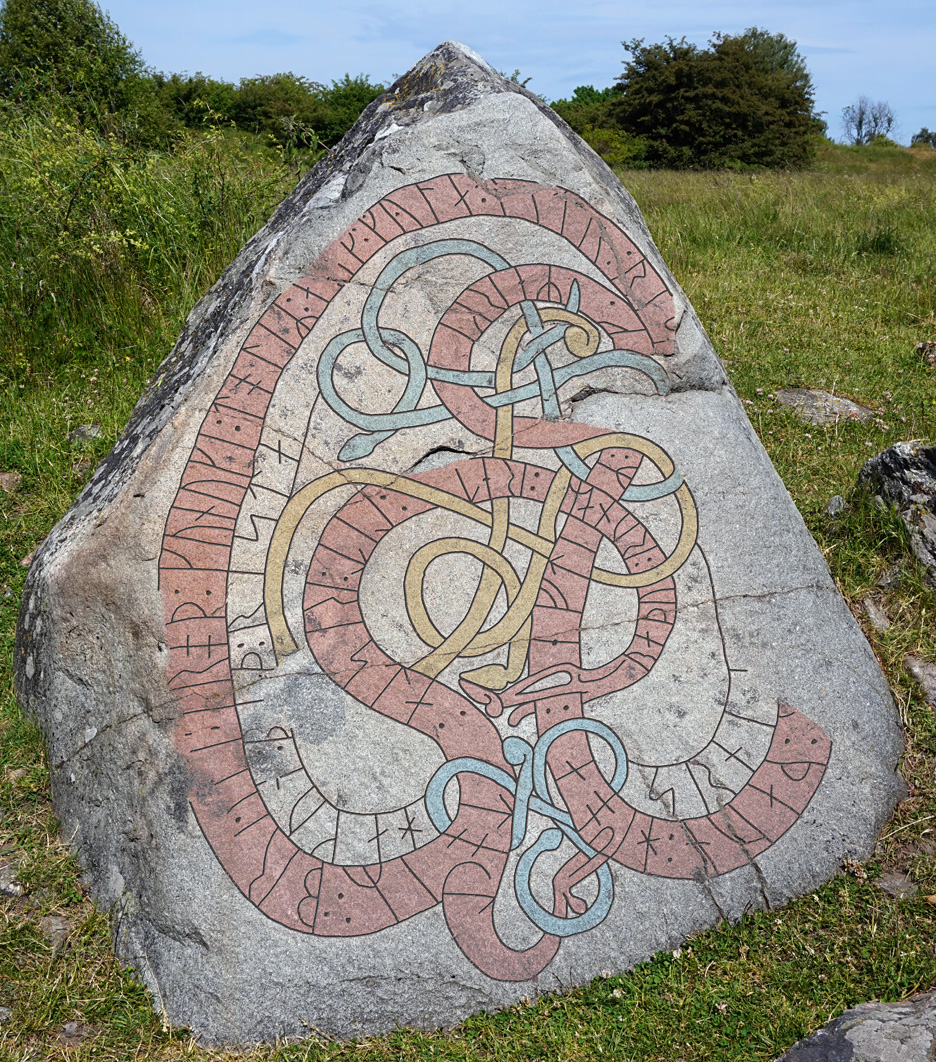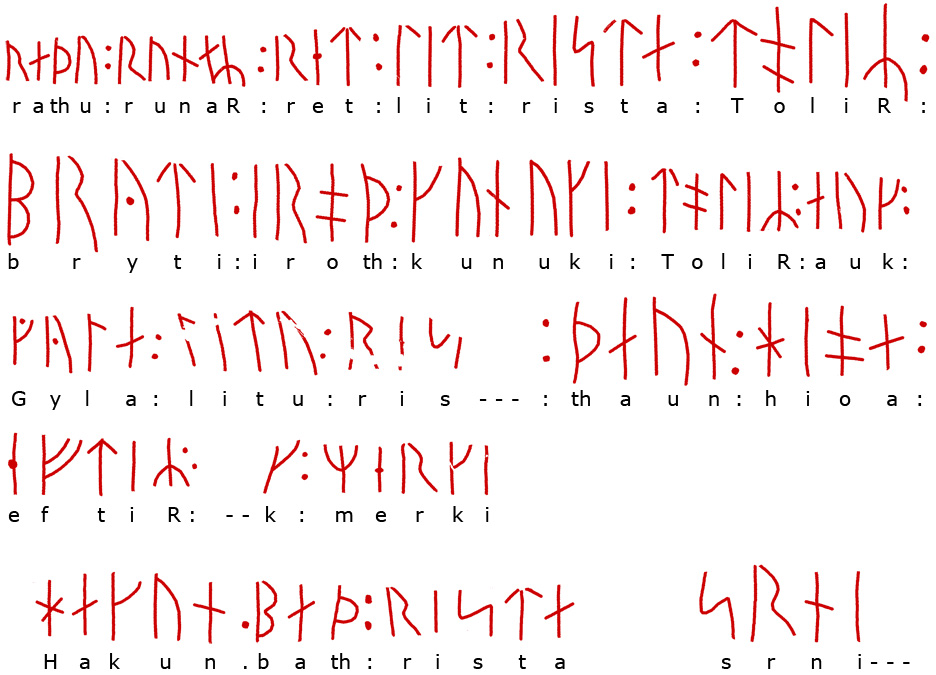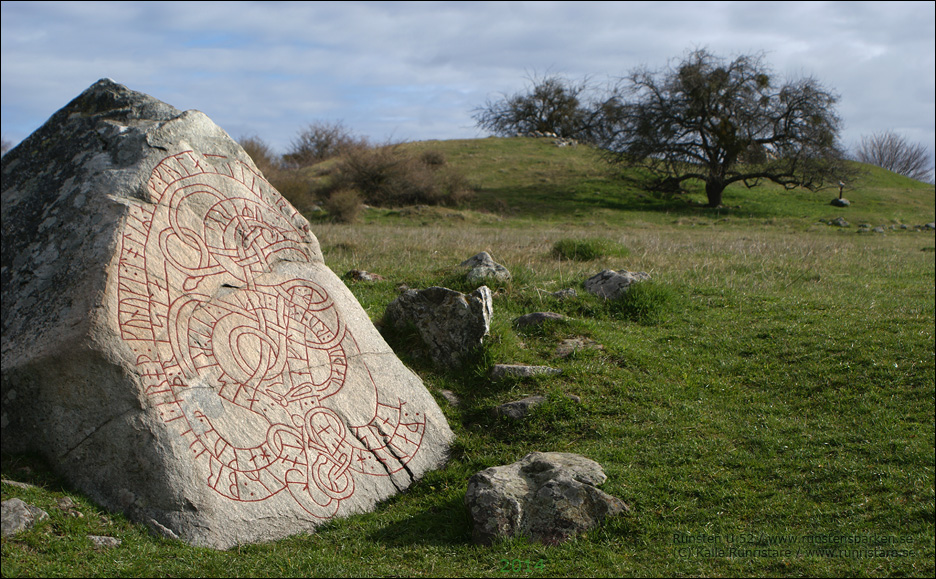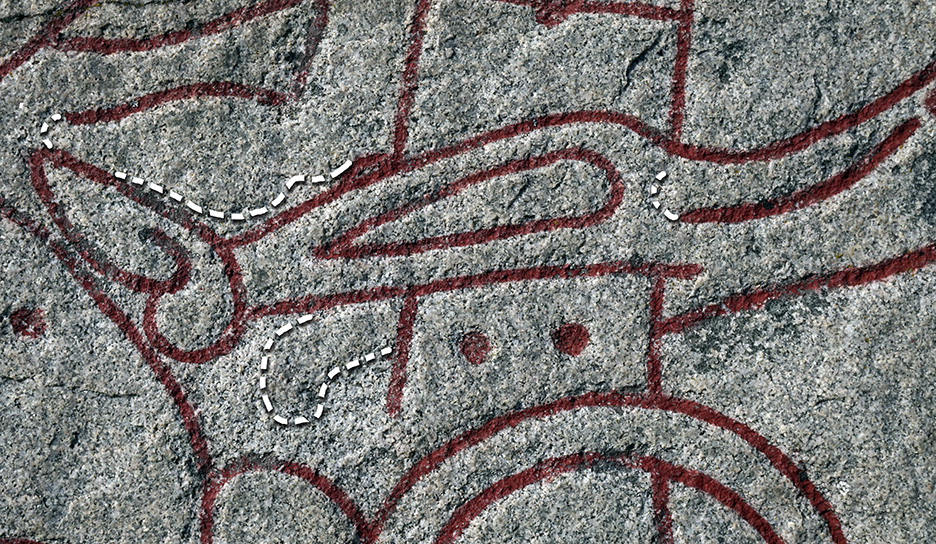|

Runic inscription in several parts:

1) Master the runes correctly. (Rathu runar ret).
A greeting and best wishes to the reader to decipher the
runic inscription correctly.
2) Correctly had
Tolir, bryte in Rod, carve them for the king.
Tolir, the king's right hand man (bryte) tells us that he is
the one who makes sure that the runic inscription is carved
correctly. (but also that the runecarver had to do the
work).
3) Tolir and
Gyla had these runes carved, husband and wife, after
themselves as a memorial.
This part is the spouses Tolir and Gyla's inheritance
document for their children and grandchildren. When kings
change, the old spoil remains. He is a key person to the
practical functioning of the royal estate. His office is
inherited.

K U N U K I = Konungen = the king
4) Hakun asked
for the carving
King Håkon asked, ordered and paid for the runic carving.
This part is a clarification about which king it is that is
mentioned in the 2nd part of the runic inscription. Since it
was probably carved afterwards, it is in an extra loop on
the inside.
5) Srni-?
Also on the right side there is an extra loop, perhaps to
balance the ornamentation, double rows on both sides?
The runic inscription is incomplete and the
5th rune is only begun. Probably the runecarver noticed that
if he cut further the runestone would break after the whole
side and and then chose to just paint the rest instead.
Today, that particular piece is gone anyway
and the interpretation of the runic inscription is unclear.
It is probably neither a Christian prayer nor the rune
carver's signature that was meant to be here. The initial
runic inscription remains a mystery.

Image from 2014
(Cleaned and painted in 2011)
Ornamentation:
The ornamentation is advanced but
traditional.
The rune carver had problems around the
dragon's head where the carved grooves were too close
together so he made an unusual choice: instead he carved in
relief around the lower lip and above the nose towards the
snake's head. He used the same technique on the dragon's
back claw

The unusual method for runestones meant that these details
were not noticed until 2016. It is not yet painted on the
original in Hovgården (2024).
Links
Upplands Runinskrifter > page
11-20
(Only in Swedish)
Kalle Runristare > More on the new details
(Only in Swedish)
Runor > - Riksantikvarieämbetet
Google map >
Find the runestone.
Map and runic inscription.
kalle@runristare.se
If you want to be of help or have a question.
ALL
RUNESTONES
Ekerö
municipality
ADELSÖ >
has 5
known runestones
BIRKA >
has fragments from 9 known
runestones
MUNSÖ >
has 3 or
4 known runestones
EKERÖ >
has 11 known runestones
FÄRINGSÖ
>
has 27 known runestones
LOVÖ >
has 8 known runestones
|

